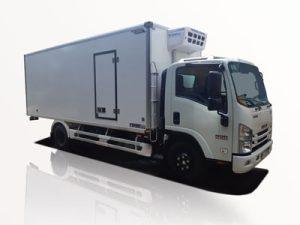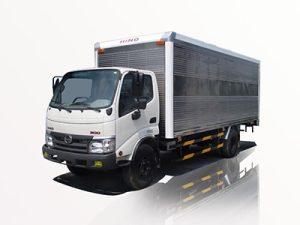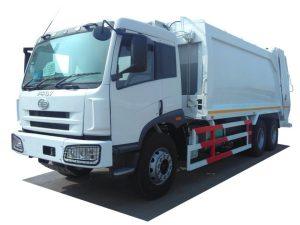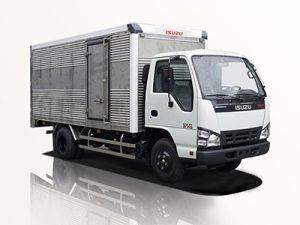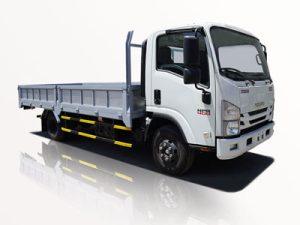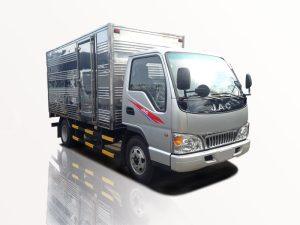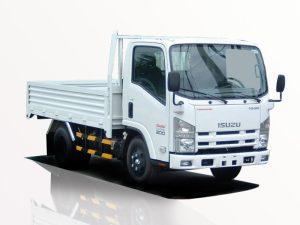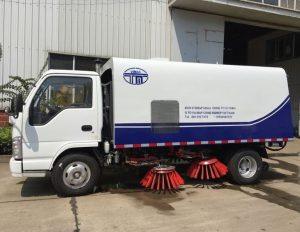Monday to Saturday - 8:00 -17:30
How Much Weight Can a Garbage Truck Lift?
Garbage trucks are an essential part of urban infrastructure, responsible for keeping our cities clean by collecting waste. But have you ever wondered how much weight these massive vehicles can actually lift? Understanding a garbage truck’s weight capacity is crucial for efficient waste management and can help residents, waste management companies, and municipalities plan better. In this article, we delve deep into the lifting capacity of garbage trucks, the factors that influence it, and the various types of garbage trucks used in modern waste collection.
Understanding Garbage Truck Weight Capacity
Garbage trucks come in various sizes and designs, each with its specific lifting capacity. On average, a standard garbage truck can lift between 10,000 to 20,000 pounds (4,500 to 9,000 kilograms) of waste. However, the actual capacity can vary based on a range of factors, including the truck’s design, equipment, and weight restrictions imposed by municipalities.
Types of Garbage Trucks
Different types of garbage trucks are designed for specific waste collection needs, and their capacity varies accordingly. Here are some common types:
1. Rear Loader Trucks
Rear loader trucks are among the most common types used for residential waste collection. They have a large opening at the back where waste is dumped into a hopper. Typical capacity: 12,000 to 20,000 pounds.
2. Front Loader Trucks
These trucks are designed for commercial waste collection and can lift larger bins using hydraulic arms. Typical capacity: 20,000 to 30,000 pounds.
3. Side Loader Trucks
Side loader trucks allow automated collection of waste bins from the side. These trucks are often used in residential areas where street parking can limit access. Typical capacity: 10,000 to 15,000 pounds.
4. Roll-off Trucks
Roll-off trucks are equipped with a flatbed and are designed to transport large containers such as dumpsters. Typical capacity: up to 30,000 pounds depending on the container’s size.
Factors Affecting Weight Capacity
Several factors influence how much weight a garbage truck can lift. Understanding these factors can provide better insights into the operational aspects of waste collection.
1. Truck Design
The engineering and design of the truck, including its frame and hydraulic systems, play a significant role in determining its lifting capacity.
2. Local Regulations
Many municipalities impose weight restrictions based on road safety, which can limit how much weight a garbage truck can carry. Always check local guidelines.
3. Type of Waste
The nature of the waste being collected can also impact lifting capacity. For example, bulky items might require special handling and could affect the overall weight.
4. Truck Maintenance
Regular maintenance of the truck’s lifting equipment is crucial for ensuring optimal lifting capacity. Over time, hydraulic systems can weaken, reducing overall performance.
Practical Examples of Garbage Truck Capacity
Understanding the practical applications of garbage truck capacities can help businesses and residents alike manage their waste more effectively. Here are some practical scenarios:
Residential Waste Collection
In a typical residential area with a weekly collection schedule, a rear loader truck may be sufficient. Assuming an average household waste of 8 pounds per person, a truck can efficiently manage waste from up to 2,500 households in a single trip.
Commercial Waste Collection
For businesses that generate a higher volume of waste, a front loader truck is ideal. Suppose a retail store generates 50 pounds of waste per customer. A truck collecting from 300 customers can handle 15,000 pounds of waste in one collection.
Construction Waste Removal
During a renovation project, a roll-off truck is often required to manage construction debris. Depending on the container size, multiple trips may be necessary if the debris exceeds 30,000 pounds.
Tips for Efficient Waste Management
To make the most of garbage truck capacities, consider the following tips:
1. Regular Scheduling
Establish a regular pickup schedule to avoid overflowing bins and maximize truck load efficiency.
2. Proper Segregation
Separate recyclables from waste to streamline collection processes and maximize the use of available truck capacity.
3. Utilize Containers Wisely
For businesses, choosing the right container size can significantly impact how much waste is collected in a single trip.
Environmental Impact of Garbage Trucks
While garbage trucks provide essential services, their environmental footprint can be significant. Understanding their impact helps drive initiatives towards greener waste management solutions.
1. Fuel Efficiency
Modern garbage trucks are designed to be more fuel-efficient, reducing their carbon footprint. Hybrid and electric models are becoming more common.
2. Emission Standards
Municipalities often impose strict emission standards to limit the environmental impact of waste collection vehicles. Compliance with these standards is crucial.
3. Recycling Initiatives
Encouraging recycling reduces waste volume, which in turn minimizes the frequency of garbage truck trips and optimizes the use of available capacity.
Comparing Garbage Truck Models
| Type of Truck | Weight Capacity | Primary Use |
|---|---|---|
| Rear Loader | 12,000 – 20,000 lbs | Residential |
| Front Loader | 20,000 – 30,000 lbs | Commercial |
| Side Loader | 10,000 – 15,000 lbs | Residential |
| Roll-off | Up to 30,000 lbs | Construction |
Future Trends in Waste Management
The future of waste management is heading towards smarter and more efficient solutions. Here are some trends to watch:
1. Smart Technologies
IoT devices are being integrated into waste management systems, providing data on waste levels and optimizing collection routes for garbage trucks.
2. Autonomous Vehicles
Trial projects for self-driving garbage trucks are underway, which could revolutionize the waste management industry by improving safety and efficiency.
3. Enhanced Recycling Techniques
Advancements in recycling technologies are making it easier to segregate materials, allowing garbage trucks to optimize their load capacities with recyclables.
FAQ Section
1. How much weight can a standard garbage truck carry?
A standard garbage truck can typically carry between 10,000 to 20,000 pounds of waste.
2. What influences a garbage truck’s lifting capacity?
Factors include the truck’s design, local regulations, type of waste, and maintenance of the hydraulic systems.
3. What types of garbage trucks are available?
Common types include rear loaders, front loaders, side loaders, and roll-off trucks, each designed for different waste collection needs.
4. Are there weight restrictions for garbage trucks?
Yes, many municipalities have weight restrictions for garbage trucks to ensure road safety.
5. Can garbage trucks lift bulky items?
Some trucks, especially roll-off trucks, are equipped to handle large and bulky items, but specific measures may be necessary for secure lifting.
6. What is the future of garbage trucks?
The future includes advancements in smart technologies, autonomous vehicles, and enhanced recycling techniques that improve efficiency and reduce environmental impact.


